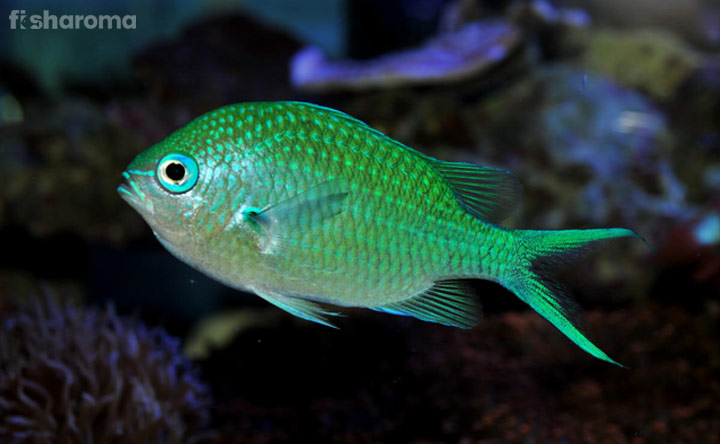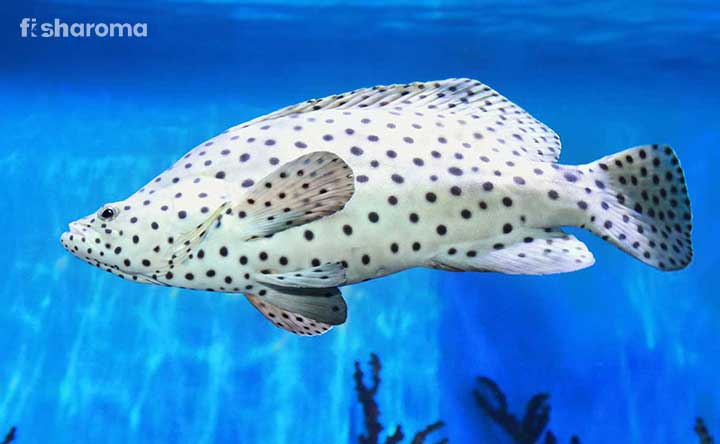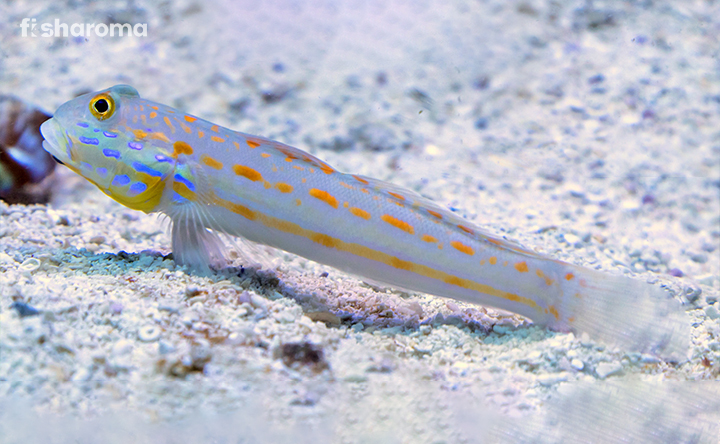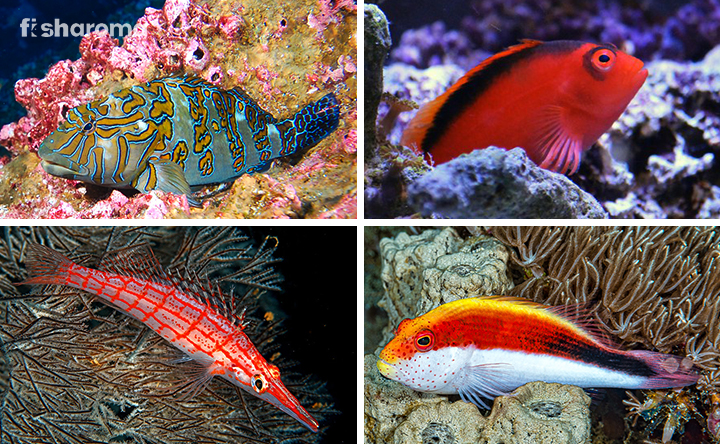Spotted Garden Eel- A Complete Care Guide

- Origin & Habitat of Spotted Garden Eel
- Appearance of Spotted Garden Eel
- Behaviour of Spotted Garden Eel
- Lifespan of Spotted Garden Eel
- Diet of Spotted Garden Eel
- Tank Requirements for Spotted Garden Eel
- Water Type for Spotted Garden Eel
- Suitable Tank mates Spotted Garden Eel
- Breeding of Spotted Garden Eel
- Diseases of Spotted Garden Eel
- Summary
Garden Eels, also known as the Spotted Garden Eel are a unique saltwater species of the Congridae family, they are found living inside deep burrows. Growing up to 47 inches in size, these species prefer to live in groups. This species of ray-finned fish is striking for its extraordinary shape and characteristics.
If you wish to beautify and upgrade the aesthetics of your aquarium, you are in the right place, as in this complete care guide of Spotted Garden Eels, we present you with everything you need to know while trying to own these beauties.
Key Specifications
There are a few key specifications you must check out:
| Scientific Name | Heteroconger hassi |
| Origin | Indo-pacific, Eastern Pacific and warmer parts of the Atlantic. Red sea to Australia East Africa |
| Lifespan | 35-40 years |
| Colours/Patterns | Whitish yellow body and large black patches(approximately three) with numerous spots. |
| Temperament | Peaceful |
| Size | 16 inches |
| Diet | Carnivorous |
| Family | Congridae |
| Compatibility | Mostly compatible |
| Tank size | 40 gallons or larger tanks. |
| Care level | Advanced |
| Water preference | Saltwater |
Overview
Scientifically known as the Heteroconger Hassi, they are mostly found in warmer regions like fragments of the Pacific and Atlantic. Their slender white build with triple black patches, look exquisite when they peek off of their sand burrows.
Belonging from the Congridae family alongside Conger Eels, these Eels are complex to care for, but is very well worth the effort as they can live up to 40 years. Growing about 16 inches, these beauties are a must-add to your tank as even after their special care needs, they do not bother most tank mates if you have some pre-set pairings in mind.
Origin and Habitat of Spotted Garden Eel
Originating mainly from the Indo-Pacific region or parts of the Pacific, warmer ends of the Atlantic and more, this Garden Eel species is found in the depths of water (approximately 150 feet). The name Spotted Garden Eel comes from its typical nature of hiding in the sea holes. In simpler terms, they have a tendency of building deep burrows on the substrate, underwater. They never entirely leave the burrow even for feeding on something and they prefer to retreat even at the slightest hint of a predator.
An ample presence of substrate is necessary, as it supports their nature of anchoring to the ground, deep in their burrows. A Garden Eel can be complex to take care of in an aquarium situation, but it certainly is not rocket science.
Appearance of Spotted Garden Eel
This variant of Garden Eels is a slender being with an elongated body, almost having the appearance of a snake. However, fun fact, they are actually ray-finned fishes with sharp teeth.
Size
They grow up to 16 inches, but the aquarium variants are initially about just 3. As juveniles, they have a thin black body.
Colour
They have a striking whitish-yellow base colour on their body, with three patches on the darker side. Surrounded with spots all over the body, they can also be seen having a somewhat blue-ish tint to them.
Behaviour of Spotted Garden Eel
Spotted Garden Eel, these reef-comfortable species mostly belong to the peaceful community due to the lack of many known threats. They usually decide to sit back, anchored in their burrows. Shades of aggression are only visible in them towards male variants at times, all in all, they are peaceful. Although, they are capable of swimming freely, they rarely or almost never decide to leave the burrows, within the sandy substrate they reside in.
Garden Eel consumes planktons from the current, and do so while being anchored with the help of a fluid they secrete, acting as a binding agent. Even their breeding process involves relocating their shelter holes close by, and continuing under-substrate.
Lifespan of Spotted Garden Eel
The Garden Eel might be a little complex to take care of, they live for very long. Living for about a staggering span of 35-40 years, this species seems to have a pretty huge lifespan.
Diet of Spotted Garden Eel
This Garden Eel breed is carnivorous in nature, and they mostly consume zooplankton or simply plankton off of the sea current. They prefer feeding from the current, and it is in its nature to not leave its burrow even to hunt, or consume the feedable as soon as it touches the bottom. Known to have a very strong eye-sight, these Eels are capable of locating each tiny plankton they mean to consume.
In order to feed them in an aquarium, we have simplified things you can feed them:
- Live Brine shrimp
- Oyster eggs
- Fish eggs
- Copepods
- Mysis shrimps
- Cyclops
Tank Requirements for Spotted Garden Eel
Following talks about things you will need to maintain properly, in order to make a Spotted Garden Eel survive in the tank:
Tank Lid
Its default role is to stop the accumulation of dust, and polluting the tank water. Other than that, since these Eels are bound to their burrows by nature, they do not have a specific need for it other than the protection factor.
Tank Size
The minimum tank size should be at least 40 gallons, they require a huge space to co-exist with their own kind and other different peaceful species. Bigger the better, as they prefer existing in a colony, especially in the bottom layer of the tank. They do live for long, so it would only make sense if the living conditions are made as comfortable as possible by the fellow aquarist. It is recommended to keep the tank size around 130-180 gallons as it really serves their comfort, and co-existence well.
Substrate
They have a huge demand for substrate, as their entire nature and livelihood is supported by that. We all know by now how fond of burrows they are and their entire life revolves around existing and functioning in it. Hence, a rich sand substrate, a rather thick layer is necessary for the tank to support that behaviour, which is of grave importance to them.
Filter
A filter is beneficial for any kind of fish, let alone Eel. It keeps the tank in the clear and supplies it with oxygen which is necessary.
Ornaments
They are reef-friendly as we know, so it is always a good idea to incorporate some in the tank. In that way, not only the tank looks absolutely stunning but it is a good emulation of their natural habitat. Other than that, the addition of live rocks works just fine.
Lighting
Lighting should be medium, they originally survive in the bottom segment of water so they will not prefer lighting as such.
Presence of Flora
Vegetation should be balanced, the Eels are shy by nature so it might lead to some sort of claustrophobic feeling if overcrowded. Reefs and live rocks support them as a whole, better. Thus, it is our recommendation to abide by that and work towards the comfort of the Eels.
Cleaning Method
This species is known to colonize the sea-floor by almost making it its home. The waste production is always accumulated on the substrate, hence a timely replacement of the substrate is beneficial.
Water Type for Spotted Garden Eel
| Hardness | 8-12 dKH |
| Temperature | 22-26 Degrees Celsius |
| pH | 8.1-8.4 |
| Salinity | 1.020-1.025 |
Hardness
A minimum water hardness range of 8-12 dKH is necessary. (carbonate hardness)
Temperature
They prefer warm waters, so a temperature range of 22-26 Degrees Celsius is good for them.
pH
Keeping the pH stable helps in suppressing stressors, and prevents diseases from affecting the fish. A range of 8.1-8.4 fits well as a parameter, when it comes to a Spotted Garden Eel aquarium.
Salinity
Salinity is of high importance, especially in saltwater tanks. A salinity of 1.020-1.025 is needed.
Compatibility of Spotted Garden Eel
Spotted Garden Eels are mostly compatible with species of less aggression, they belong to a peaceful community. Still, it is very easy for them to get stressed out, even at the slightest over darting of peaceful fishes around their space. They are easily intimidated by fishes bigger than their size, let alone the aggression in nature of the same.
Suitable Tank mates
These fishes are suitable with most peaceful fishes because they prefer to colonize the bottom part of the sea. Mostly comfortable with sand-dweller this species follows a few suitable tank mates that work well in a Spotted Garden Eel tank:
- Spaghetti worms
- Medusa worms
- Nassarius snails
- Sea cucumbers
- Cerith snails
- Hermit crabs
- Firefish
- Blue spotted toby
- Pygmy Perchlet
- Clown Goby
- Blennies
- Seahorse
- Jawfish
- Royal grammas
Unsuitable Tank mates
Although, one should note the fact that sharing the tank with a bigger, or aggressive species might actually cause them to never leave their burrows and hence, die from starvation and stress.
Breeding of Spotted Garden Eel
As we already know, this variant of Garden Eels doesn’t like to leave their burrows at all, even for breeding. Their entire process of breeding consists of the male and the female counterparts, bringing their burrows together closer to each other. The males will show aggression only around the breeding period, as both the sexes are dimorphic.
A strong essence of aggression is showcased in this majorly peaceful breed, when the male fishes fight for the mate of their choice. The male Eels get to choose their females, and they are territorial about their choices. This is the reason why they show aggression, to overpower the competition. On acceptance from the female’s side, the two sexes embrace their union by wrapping their bodies in close contact.
The potential spawns in the form of eggs are released in the current, but they remain close to the surface. The offspring remain pelagic after the process of hatching and when they are big enough, they go back to building burrows for themselves. It could be quite a difficult challenge to breed them in captivity as not only they are very shy by nature, but get stressed out very easily. Plus, it is not easy for juveniles to attain a certain level of comfort for a long time, so trying to make them fit in right away is never a good idea.
Diseases of Spotted Garden Eel
Diseases are common be it any kind of fish. Similarly, our exquisite Spotted Garden Eel is not invincible. A few known things about some common Eel related diseases are:
- Parasitic Diseases- Known to cause high mortality in Eels, infection from harmful parasites like Myxidium giardi or blood parasites like Trypanosoma spp. and more can be linked.
- Viral Diseases- Viruses are capable of causing hemorrhagic diseases causing an incline in the mortality rate of Eels.
- Bacterial Diseases- Some potential species of bacteria namely Vibrio vulnificus and Edwardsiella tarda has been linked to bacterial infections of the Eel.
Treatment
Not much is known about specific diseases or cures of Spotted Garden Eels, but there can be safety measures that can prevent them from getting fatally harmed by the above mentioned. Here goes a few measures that would prevent the measures from getting sick:
- Time to time testing of the Eels for any sort of Parasitic, Bacterial or Viral diseases.
- Keeping the water clean.
- Quarantining the affected immediately from the tank of the healthy Eels.
Summary
This article talks about the beauty of these tiny serpent-like creatures known as the Spotted Garden Eel. Their beautiful colour composition boosts the glory of your aquarium. Perhaps, they are complex to care for but it is well worth it, as they not only live for long, but they are capable of surviving in peace with the other peaceful breeds. So it is a very interesting addition to your tank if you are looking for something long term, absolutely gorgeous and unique.
Similar Care Guides you may like: Garden Eel
- The Ultimate Care Guide to Fire Eel- This species of Eel is peaceful just like the garden Eels, originating from Southeast Asia.
- Moray Eel– Similar saltwater species just like the garden Eels, Moray Eels belong to the Muraenidae family living a similarly long life of up to 30 years.
- Kuhli Loach Complete Care Guide – Although, they are freshwater species, they have a similar peaceful temperament with good compatibility levels.









